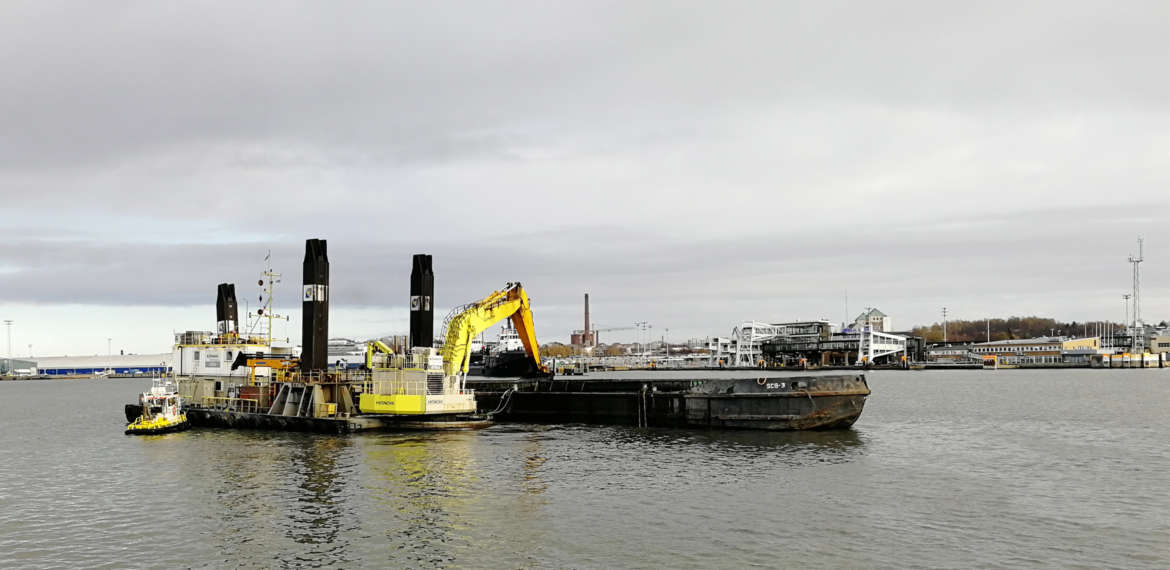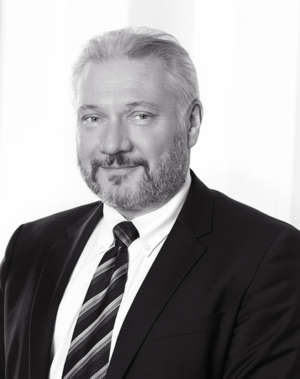Port of Turku and the City to end disposal of dredging masses in the sea
The disposal of dredging masses in the sea in Airisto has been a hot topic in the Turku region for a long time. The discussion took a new turn in September, when the Board of Port of Turku Ltd decided not to apply for a new permit for disposal of dredging masses in the sea after the expiry of the current permit in June 2019. Instead, the Board of Port of Turku proposed to the Turku City Board that switching to alternative methods of disposal by 2024 be investigated. The City Board made a decision on that at the beginning of October.

”It’s natural for Turku as the other initiator of the Baltic Sea challenge to grasp the opportunity to improve the state of the Archipelago Sea in that respect, too. Although disposals in the sea have been implemented in accordance with the valid environmental permit and their impacts were followed regularly, it does not necessarily mean that they are harmless for the marine environment. In addition to securing Port of Turku’s vessel traffic, the City of Turku is also for its part responsible for keeping its water areas fit for sailing. The continuing need for maintenance dredging thus also concerns the City, as the solutions can’t be implemented by the port enterprise alone”, says Deputy Mayor Jarkko Virtanen.
Disposal on land is the primary option
 Alternative methods of disposal have been looked into and also tried before. In 2006, possible disposal sites on land in the City of Turku were investigated primarily for the placement of dredging masses not suited for disposal in the sea. In 2017, preliminary investigation initiated by the Port of Turku and the Centre for Economic Development commenced for mapping out the potential disposal sites on land in the whole of the Turku region. A report was completed in May 2018. Furthermore, the Port of Turku implemented from 2006–2009 a pilot project in the Pansio Harbour where stabilised masses not suited for disposal in the sea were placed in an embankment pool built there.
Alternative methods of disposal have been looked into and also tried before. In 2006, possible disposal sites on land in the City of Turku were investigated primarily for the placement of dredging masses not suited for disposal in the sea. In 2017, preliminary investigation initiated by the Port of Turku and the Centre for Economic Development commenced for mapping out the potential disposal sites on land in the whole of the Turku region. A report was completed in May 2018. Furthermore, the Port of Turku implemented from 2006–2009 a pilot project in the Pansio Harbour where stabilised masses not suited for disposal in the sea were placed in an embankment pool built there.
”The study completed in spring showed that there is a limited number of potential disposal sites on land in the Turku region. The goal of the new study is to map out all disposal sites controlled by the City as well as other possible sites for the disposal of dredging masses in nearby areas. At the same time we will investigate together with the owners of the land and water areas the possibilities to implement disposal sites on land and embankment pools, and the further use of those areas after the disposal has ended”, Jarkko Virtanen says about the goals of the investigation.
Latokari is the first disposal site considered
The first area to be examined will be Lauttaranta in Hirvensalo, in the Latokari area. The site was already mentioned in the study conducted in 2006, and the City of Turku is working fast to take it into use. The City’s budget includes a provision for the dam structures of embankment pools, and the work on them is set to start in 2020.
”The Latokari plan is a textbook example of a cost-efficient way to find a solution for the disposal of dredging masses on land. By placing the sediment accumulated from dredging in embankment pools to be built on reliction it becomes possible to plan and build a new district with block of flats by the sea in the Latokari area. In the best case, the proceeds from the sales of plots of land created may cover the costs of construction prior to the disposal”, Mr Virtanen estimates.
The Latokari solution will extend to 2030s
The schedule for the pre-construction of the Latokari area is planned to serve the needs of the Port’s maintenance dredging far into the future. At the same time it provides time for mapping and further preparation of other alternatives.
”The Port has already reduced its disposal needs by switching to enhanced follow-up of fairway maintenance. At the same time, the volume of disposal masses has decreased very significantly compared to the first years of the 2000s. As the dredging interval has been extended to around five years, the embankment pool in Latokari offers a solution for the disposal of the dredging masses of both the Port and the City for about ten years ahead.”
While the Latokari area is being filled, the next step will be decided i.e. in which order the other possible disposal sites on land will be taken into use. The priorities will be determined according to the service value of the area and the costs of introduction.
Further planning will also involve other parties
In addition to the Port of Turku and the City, e.g. the Meyer shipyard and the neighbouring cities have dredging needs. During the study, the attitudes and readiness of other parties involved to switch to alternative methods of disposal will be mapped out. The overall goal is that in co-operation with the City of Turku the other parties that do maintenance dredging could also give up disposals in the sea in Airisto water areas.
“The condition of the Archipelago Sea is a matter of heart for Turku, which is profiled as a Baltic Sea city, and its inhabitants. As a political consensus supported by the people prevails concerning the matter, it’s the City’s job to create a setting for the environmentally sound and cost-efficient use of the dredging masses”, Deputy Mayor Jarkko Virtanen emphasises.
Text: Kari Ahonen
Photos: Markku Alahäme and City of Turku
